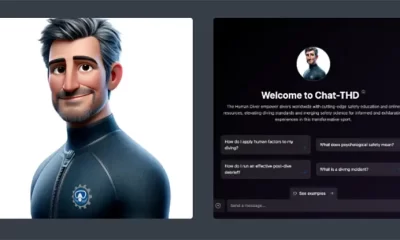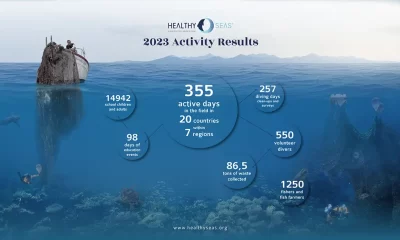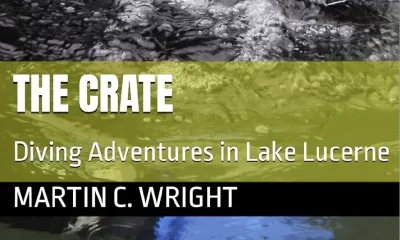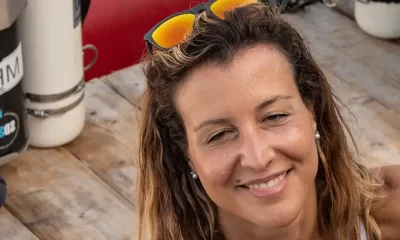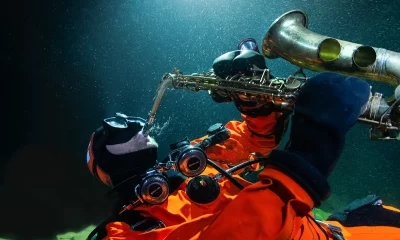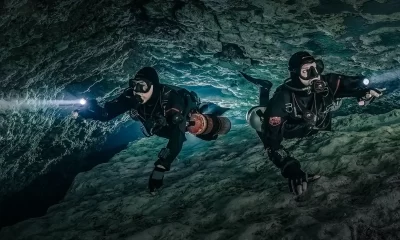News
Environmental Divers Clean Up the HMS Perseus
The Ghost Net divers are at it again, this time liberating the wreck of a downed British WWII sub from those deadly nets.
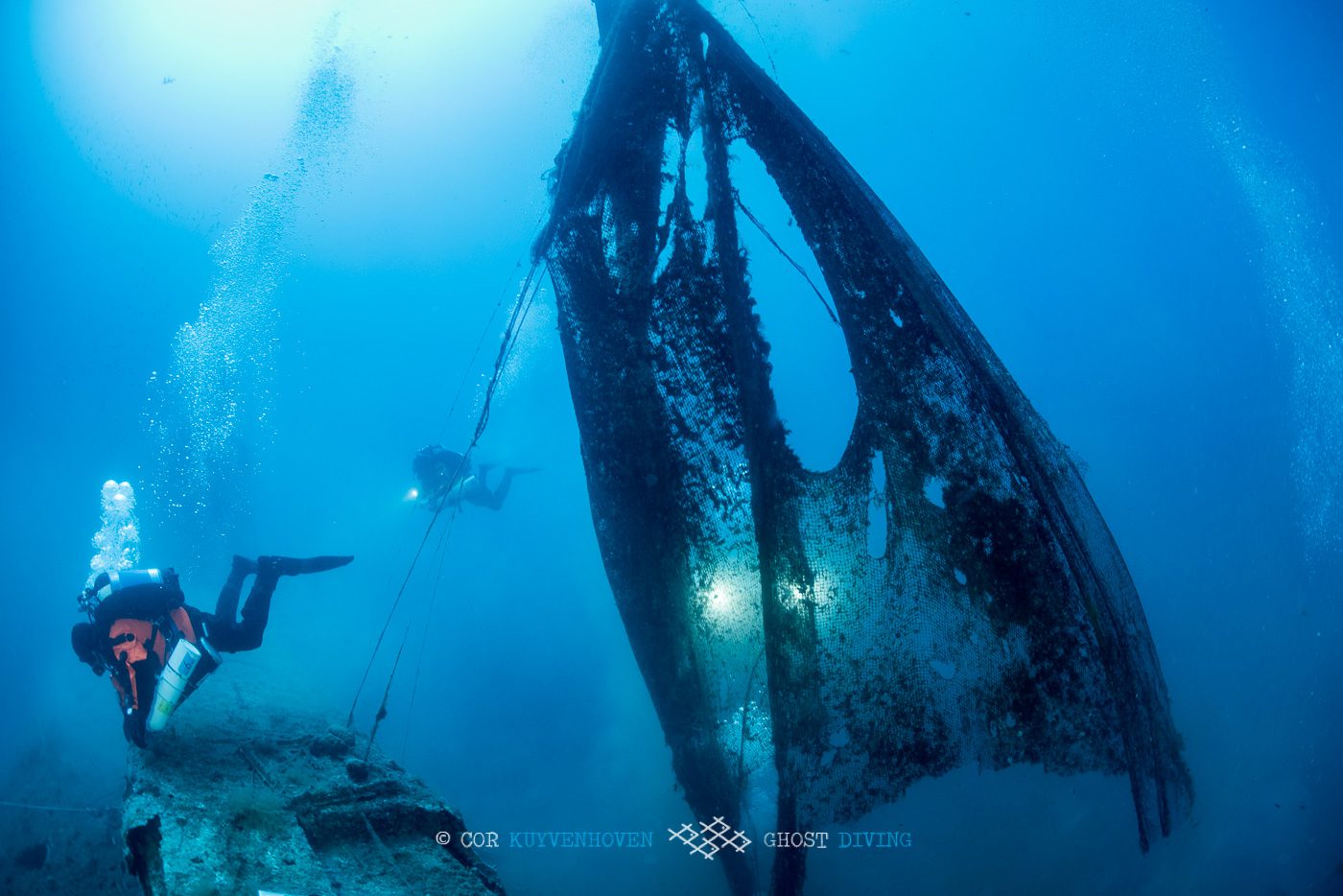
Header photo by Cor Kuyvenhoven.
PRESS RELEASE
28 July 2020
While shipwrecks and reefs are hot spots for biodiversity by providing food and shelter to extensive marine life, at the same time they are deadly traps. Lost and discarded fishing nets, also known as ghost nets, often get snagged there, capturing animals such as sea turtles, dolphins, seals, birds, and also fish that die because they cannot free themselves.
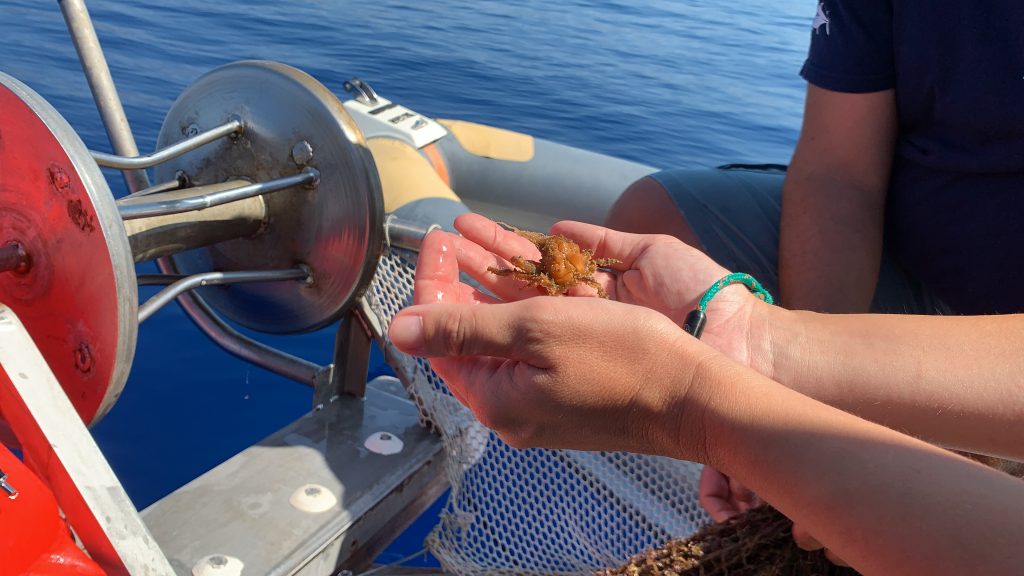
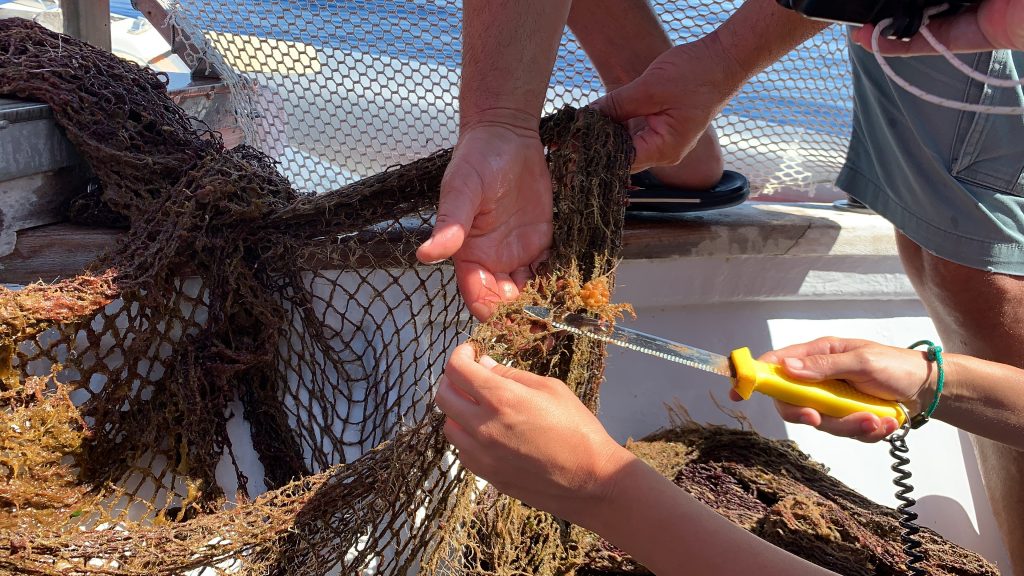
In the area between the Greek islands of Kefalonia and Zakynthos, the wreck of the British submarine HMS Perseus lies at a depth of 52 m/170 ft in the Ionian Sea. Not unlike other wrecks, this one also comes with a fascinating story about its lone survivor, a British Navy stoker by the name of John Capes who escaped from the submarine’s hatch after it hit an Italian mine during WWII. He survived not only the journey to the surface, but also the five-mile (8 km) swim to the island of Kefalonia during the night, where he was hidden by islanders for 18 months before being smuggled in a caïque to Smyrna, Turkey. He was subsequently awarded a British Empire Medal.
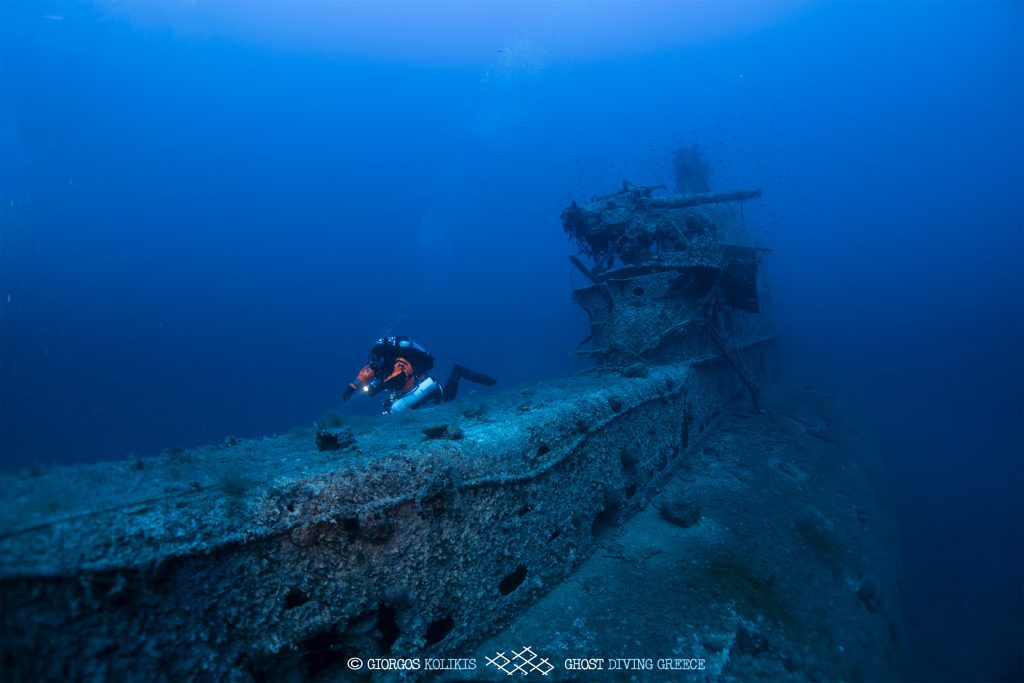
The HMS Perseus is one of the biggest submarines of World War II and a cultural heritage site [2]. Between July 22nd and 26th, after long preparations, six specifically trained volunteer technical divers from Ghost Diving, who have long been allured by the mystery and historical value of the wreck, finally made it their mission to dive at the HMS Perseus to remove the fishing gear that was covering the submarine. By doing so, their goal was to protect the marine inhabitants of this biodiverse area, such as the loggerhead sea turtles, dolphins, and monk seals that just so happened to make an appearance in the area while the divers were working. It is estimated that millions of animals die each year by getting trapped in lost fishing gear.
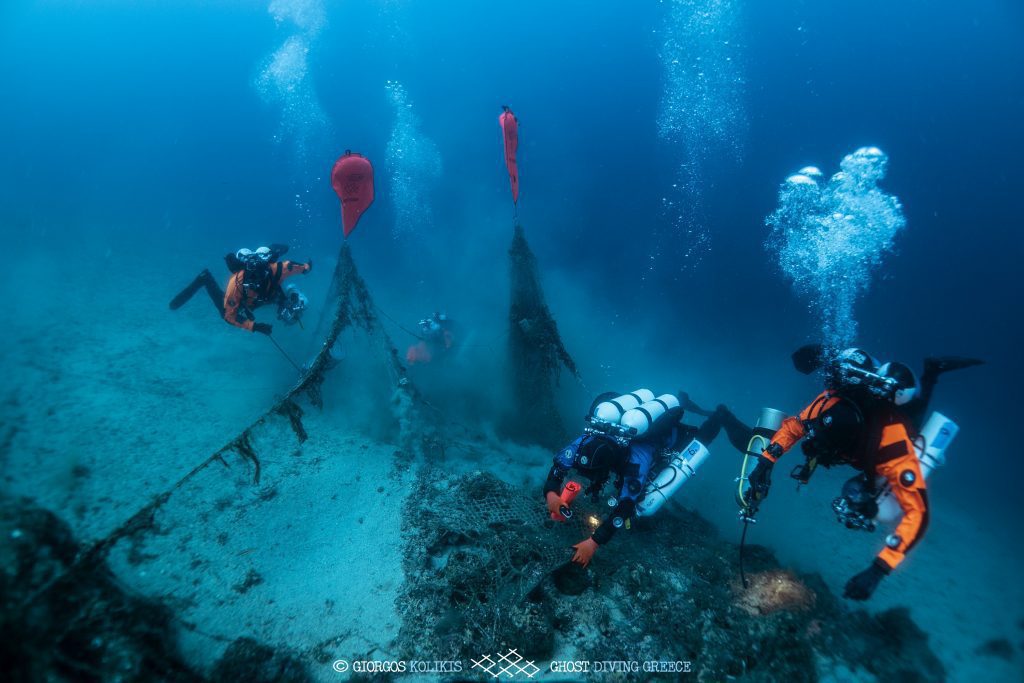
The team performed three dives on HMS Perseus lasting 65 minutes each. After a thorough survey dive, the divers decided to focus on the conning tower and the front outer hull. Following the second dive, the conning tower is now almost completely free of fishing nets, and the wreck’s original structure has been unveiled. During the third dive, a large piece of fishing net that was covering the outer hull and reaching all the way to the bottom, was also removed. The difficulty level of the job was escalated by the many long lines that had been mixed up with the nets over the years. However, the operation went as planned and without any problems thanks to the professional support of Aquatic Scuba Diving Club. The underwater cleanups lasted five days targeting also other wrecks in the area, at 50m/163 ft depth and recovering a total of 500 kgs/1102 lbs of lost fishing gear.
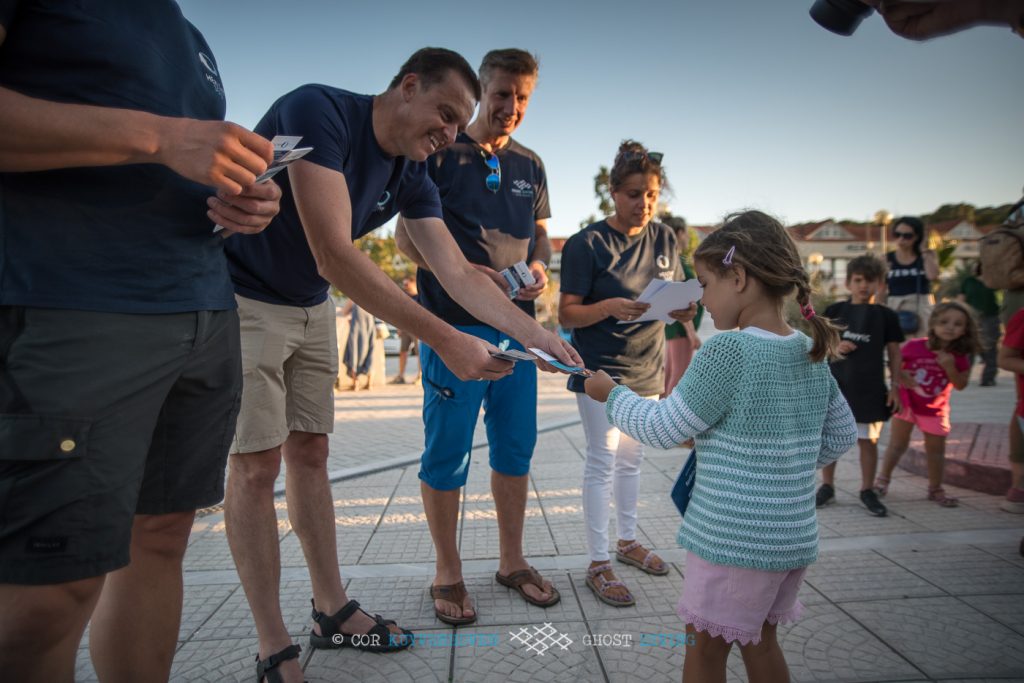
The event was organized by Healthy Seas, and besides the sea clean ups, also included a public awareness event in the capital of Kefalonia. Local groups and various artists participated in the event, attempting to highlight the importance of the marine and coastal Natura 2000’s three sites around the island and raising awareness about marine pollution and ghost nets. The public event was organized within MIO-ECSDE’s ‘Mediterranean Action Day 2020’, supported by the LIFE+ Operating Grant for NGOs and made possible thanks to the support and hospitality of Aenos National Park, the Kefalonia – Ithaka Geopark, the Kefalonia & Ithaca Port Fund, and the Municipality of Argostoli.
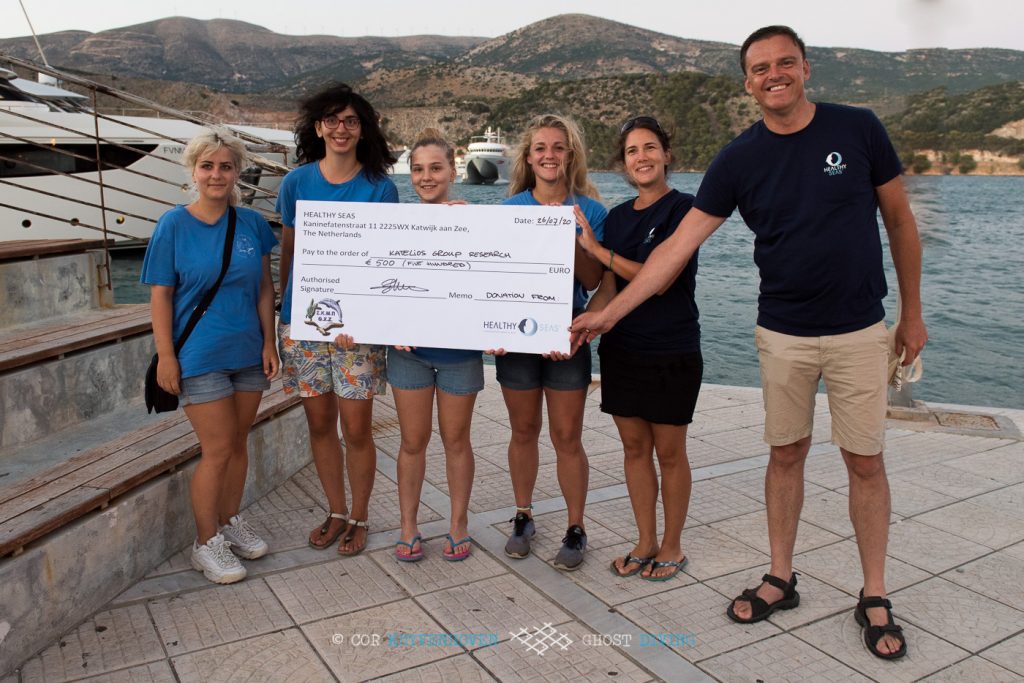
To further support endeavors for the protection of the endangered Caretta caretta, native to the Mediterranean Sea, Healthy Seas handed over a donation cheque to Kateleios Volunteer Group. Recently, Healthy Seas also released “A Turtle’s Fear”, a short and poignant film narrated by AJ+ and National Geographic journalist, Gelareh Darabi, about the ghost fishing phenomenon and its deadly effects on this majestic species.
The nylon fishing nets that were recovered during this mission will now continue on a journey from waste to wear and will be regenerated, together with other nylon waste, into ECONYL® yarn, the basis for new sustainable products such as socks, swimwear, sportswear or carpets.
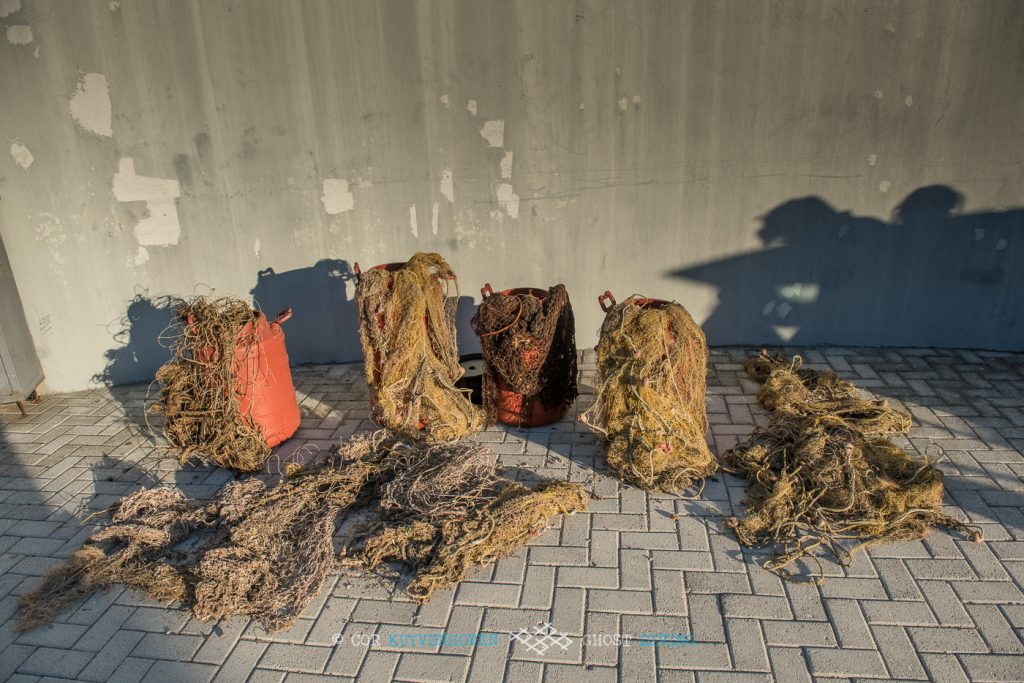
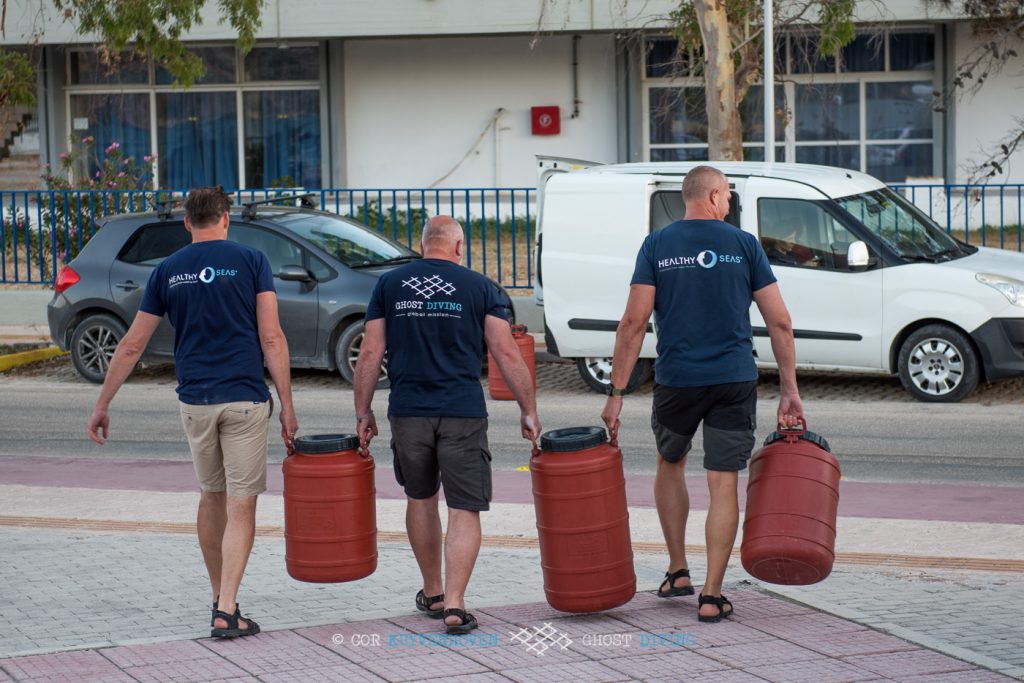
Footnotes:
- The discarded, lost, or abandoned fishing nets are sometimes called “ghost nets”, since they continue to catch fish and other marine animals without human involvement. Millions of marine animals, including sharks, dolphins, seals and turtles suffer because of entanglement in these nets which leads to serious injuries and death eventually. Every year, some 640,000 tons of fishing gear is left in our seas and oceans. It is plastic waste that remains in the seas for hundreds of years and doesn’t biodegrade.
- Unbelievable Submarine Escape Proven True – John Capes’ Story of Unsung Heroism in WWII – Wreckage Video
PERSEUS SUBMARINE 1928-1941 – WRECK WRAK EPAVE WRACK PECIO
Submarine escape: A WWII survival tale from Kefalonia
HMS Perseus: The story of the sole survivor of a British submarine sunk in 1941 off Kefalonia, Ionian Sea, Greece - Natura 2000 is a network of core breeding and resting sites for rare and threatened species and some rare natural habitat types which are protected in their own right. Stretching over 18% of the EU’s land area and almost 6% of its marine territory, Natura 2000 is the largest coordinated network of protected areas in the World. The aim of the network is to ensure the long-term survival of Europe’s most valuable and threatened species and habitats, listed under the Birds Directive and the Habitats Directive.
Dive Deeper:
- Healthy Seas
The mission of ‘Healthy Seas, a Journey from Waste to Wear’ initiative is to remove waste from the seas, in particular fishing nets, for the purpose of creating healthier seas and recycling marine litter into textile products. The recovered fishing nets will be transformed and regenerated by Aquafil into ECONYL® yarn, a high-quality raw material used to create new products, such as socks, swimwear, sportswear or carpets. Since its founding in 2013, Healthy Seas has collected over 510 tons of fishing nets with the help of volunteer divers and fishermen. https://healthyseas.org
First Healthy Seas Mission in the Ionian Sea – HEALTHY SEAS - Ghost Diving
Ghost Diving is a registered charity organization of volunteer technical divers specialized in the removal of lost fishing gear and other marine debris since 2009. The organization was formerly known as Ghost Fishing foundation. Ghost Diving is the biggest international diving team working on this topic with a track record in a significant variation of countries and international waters.
Ghost Diving: Home



















